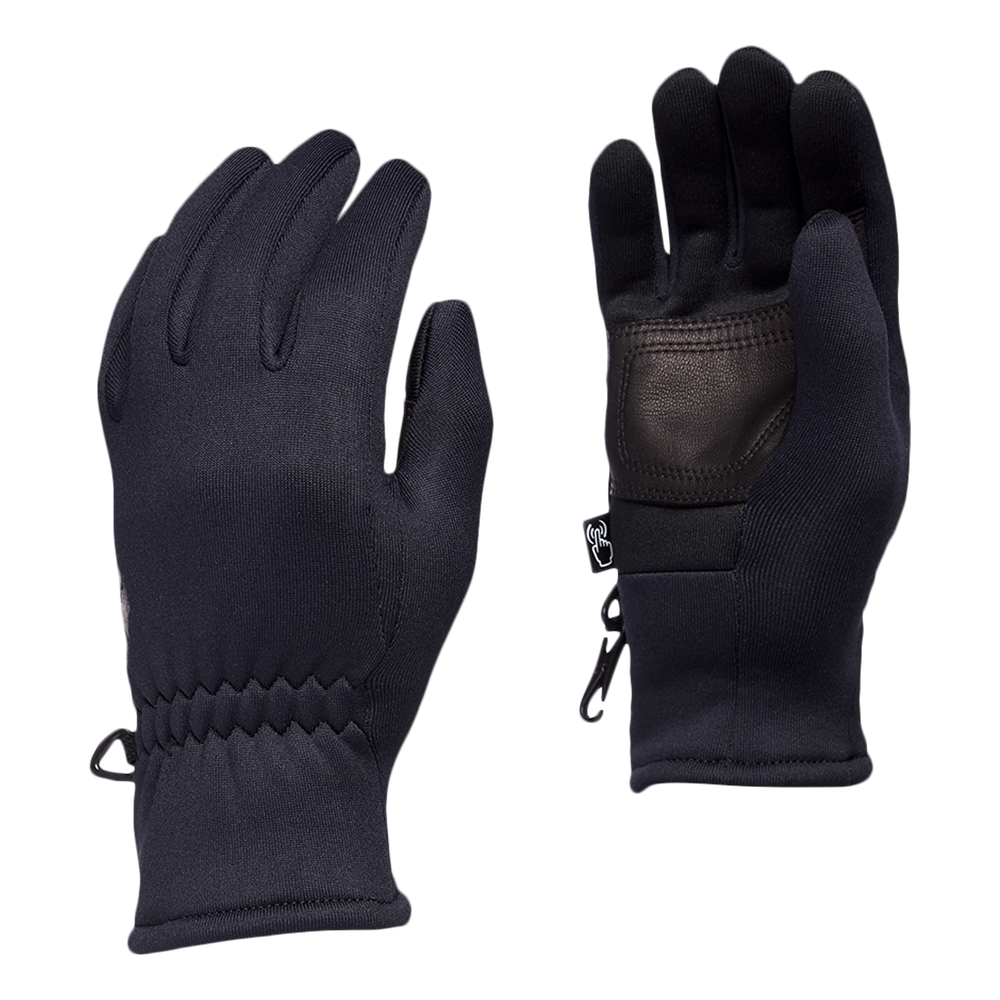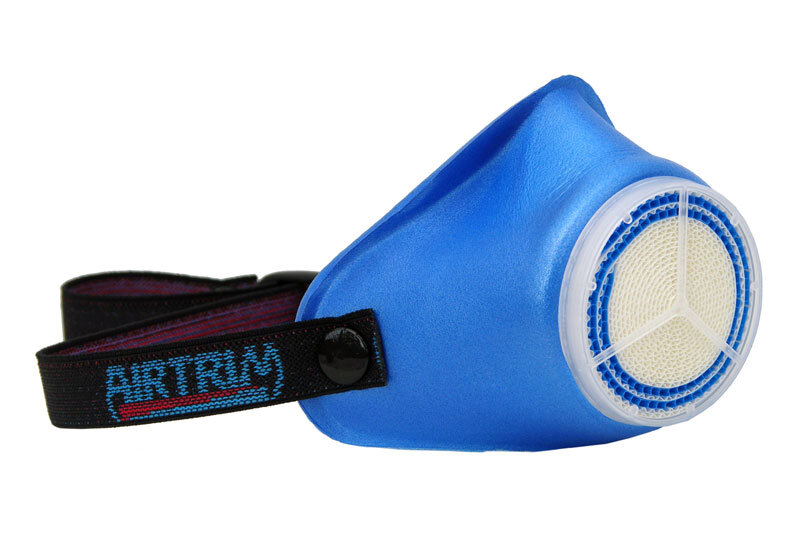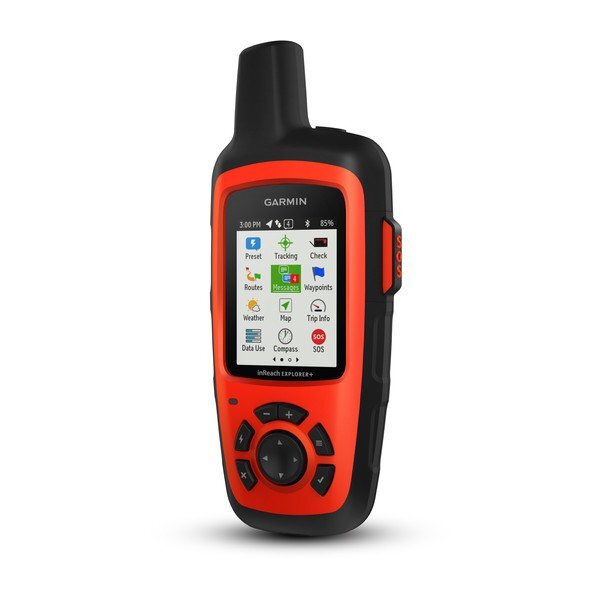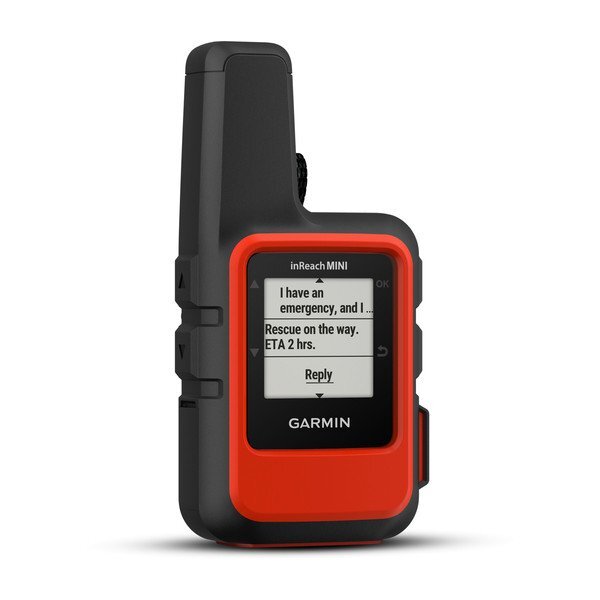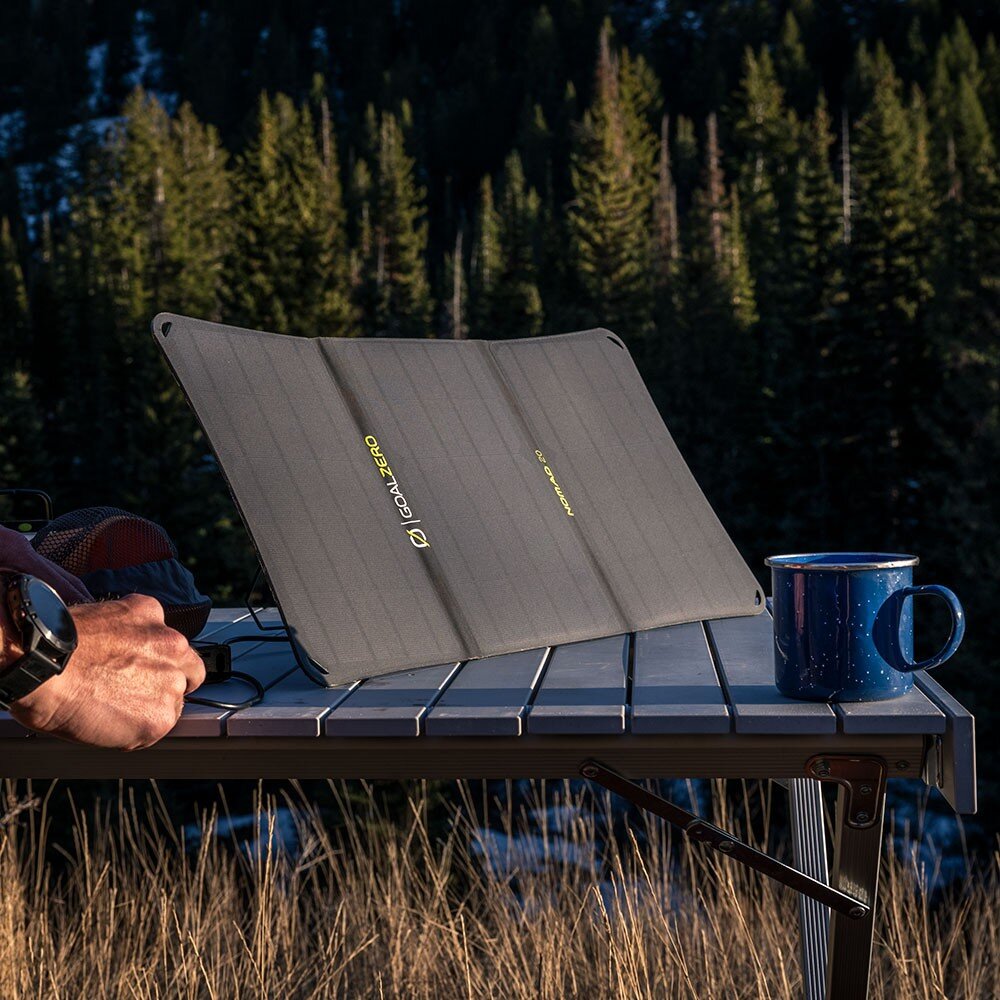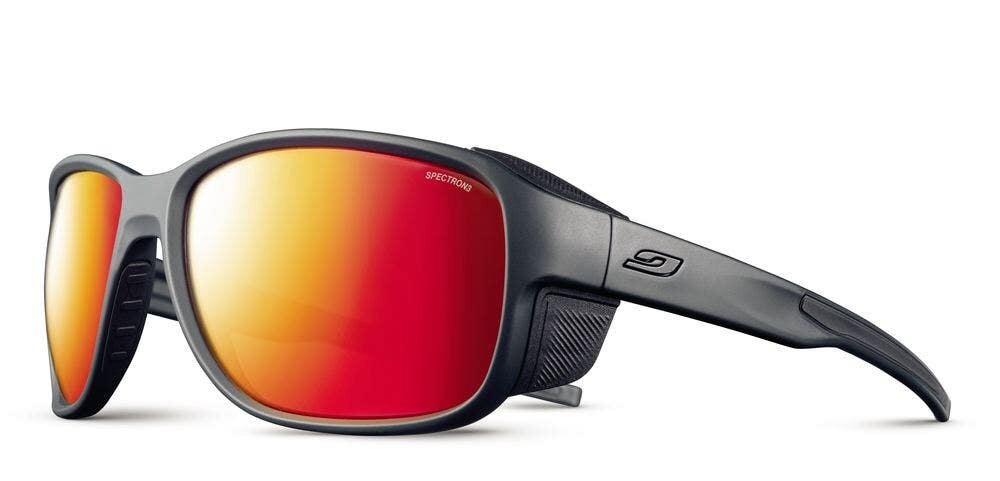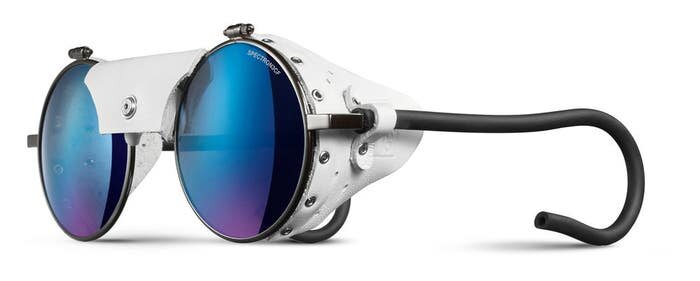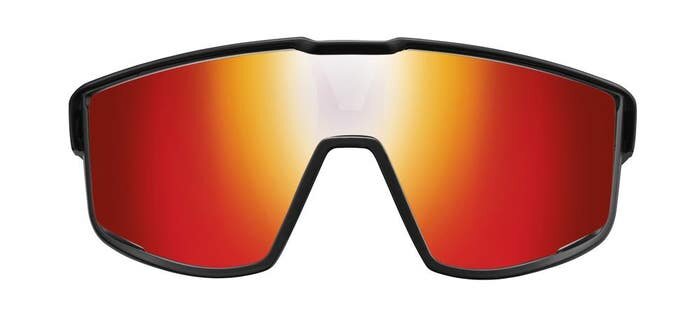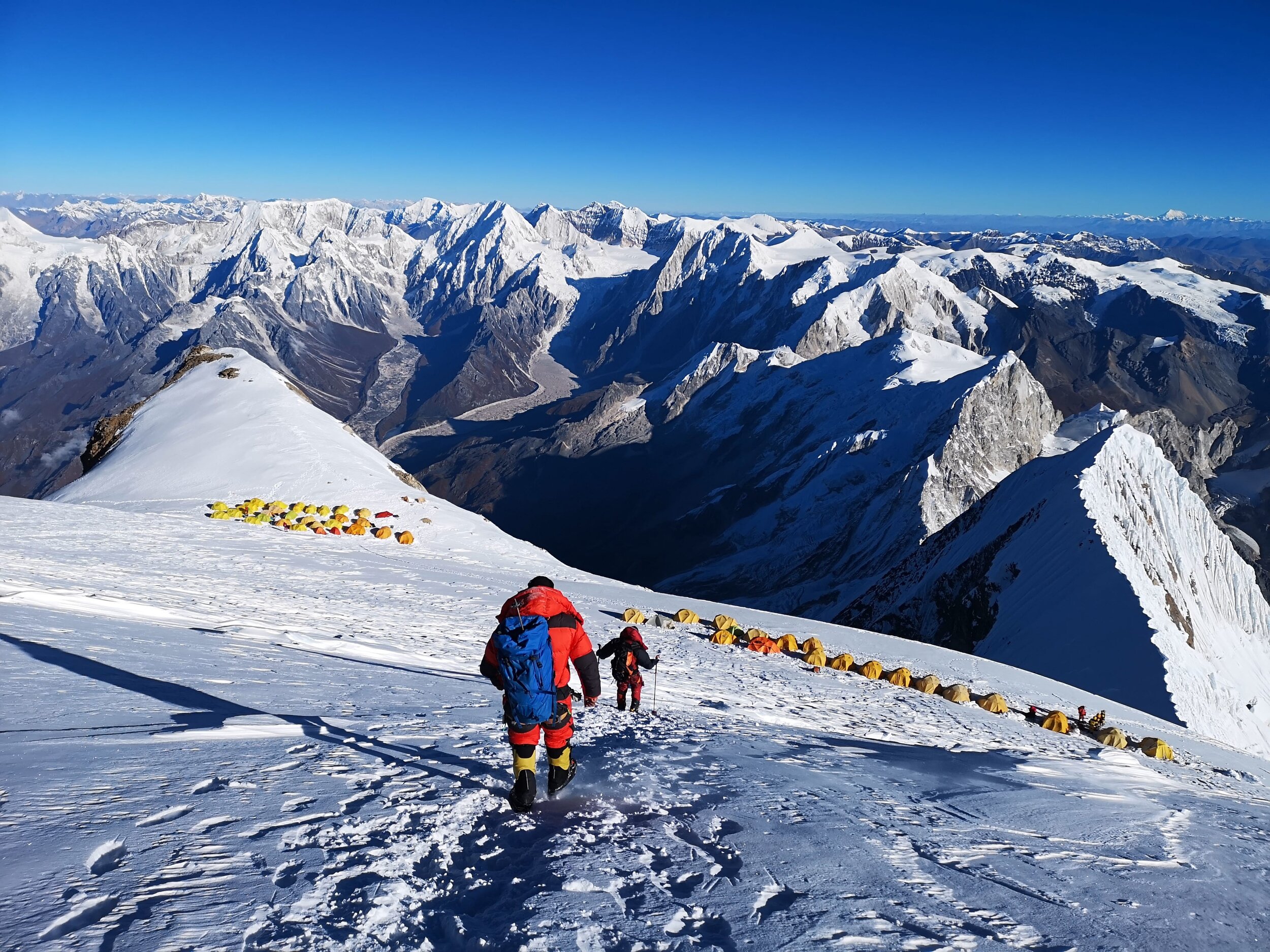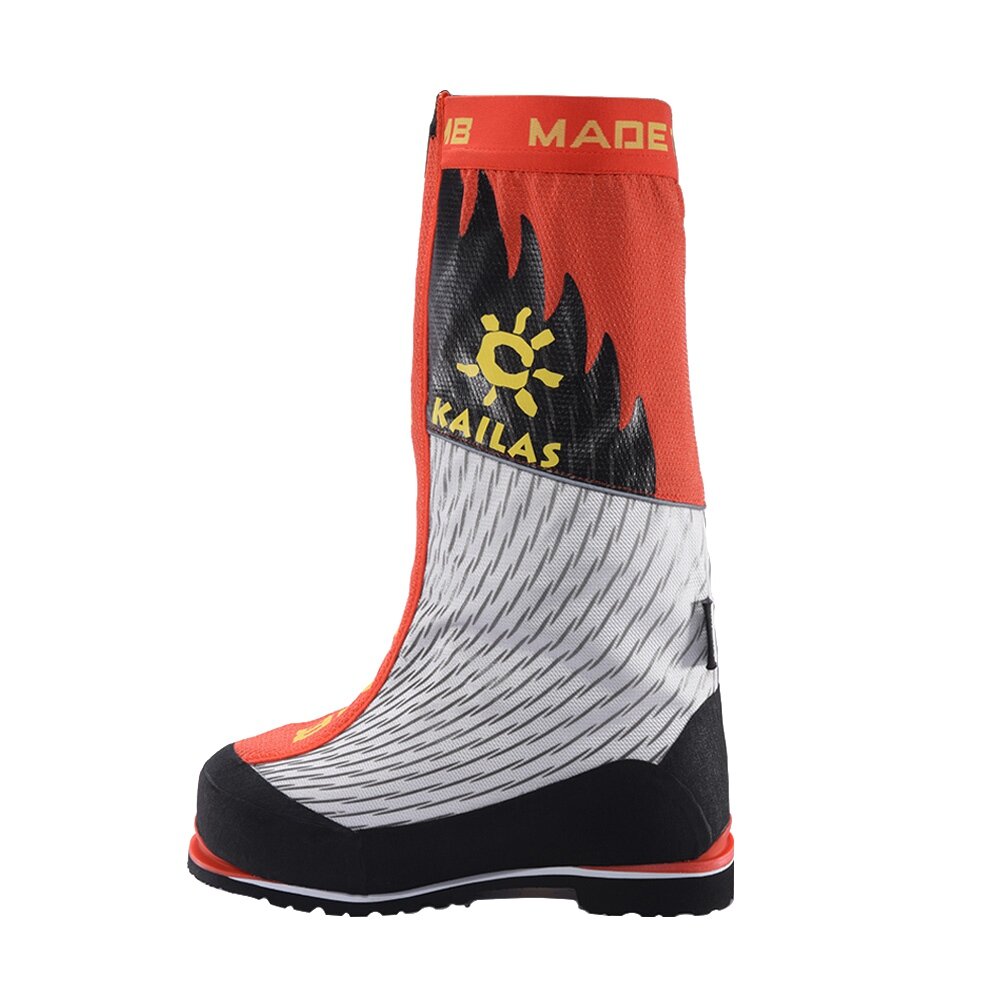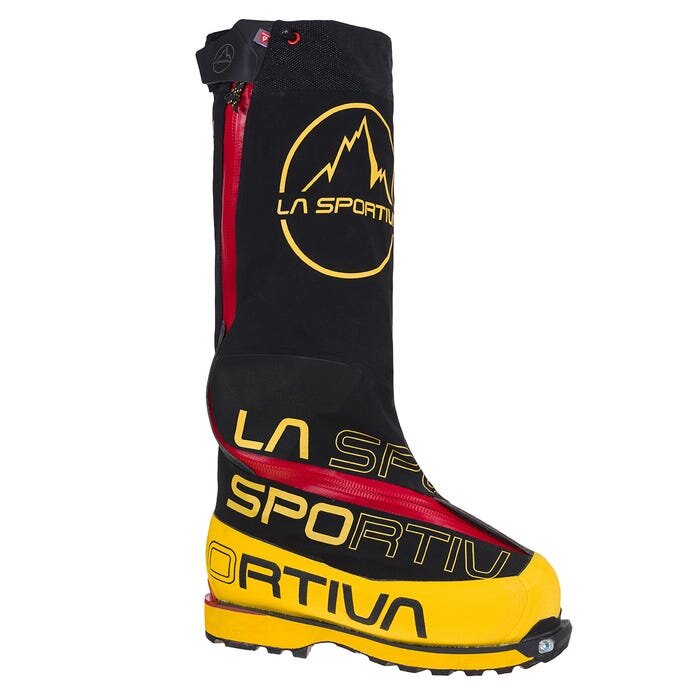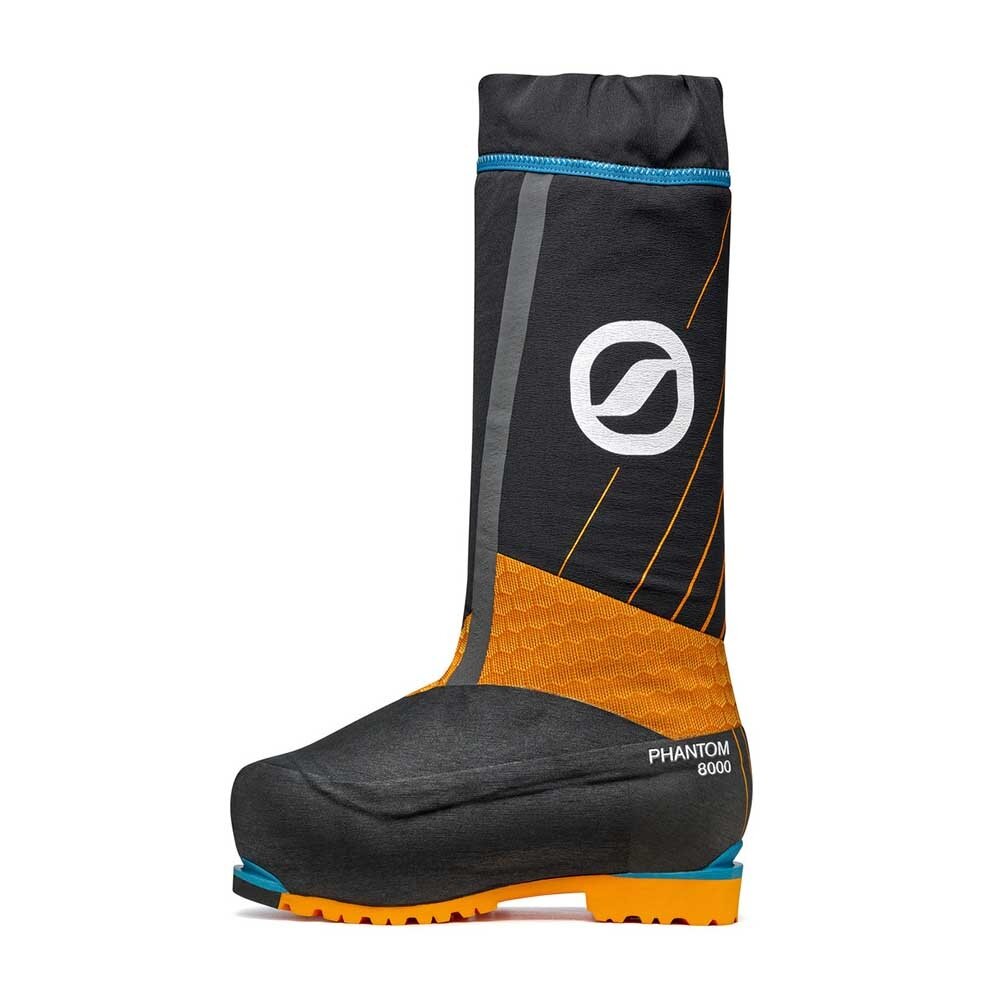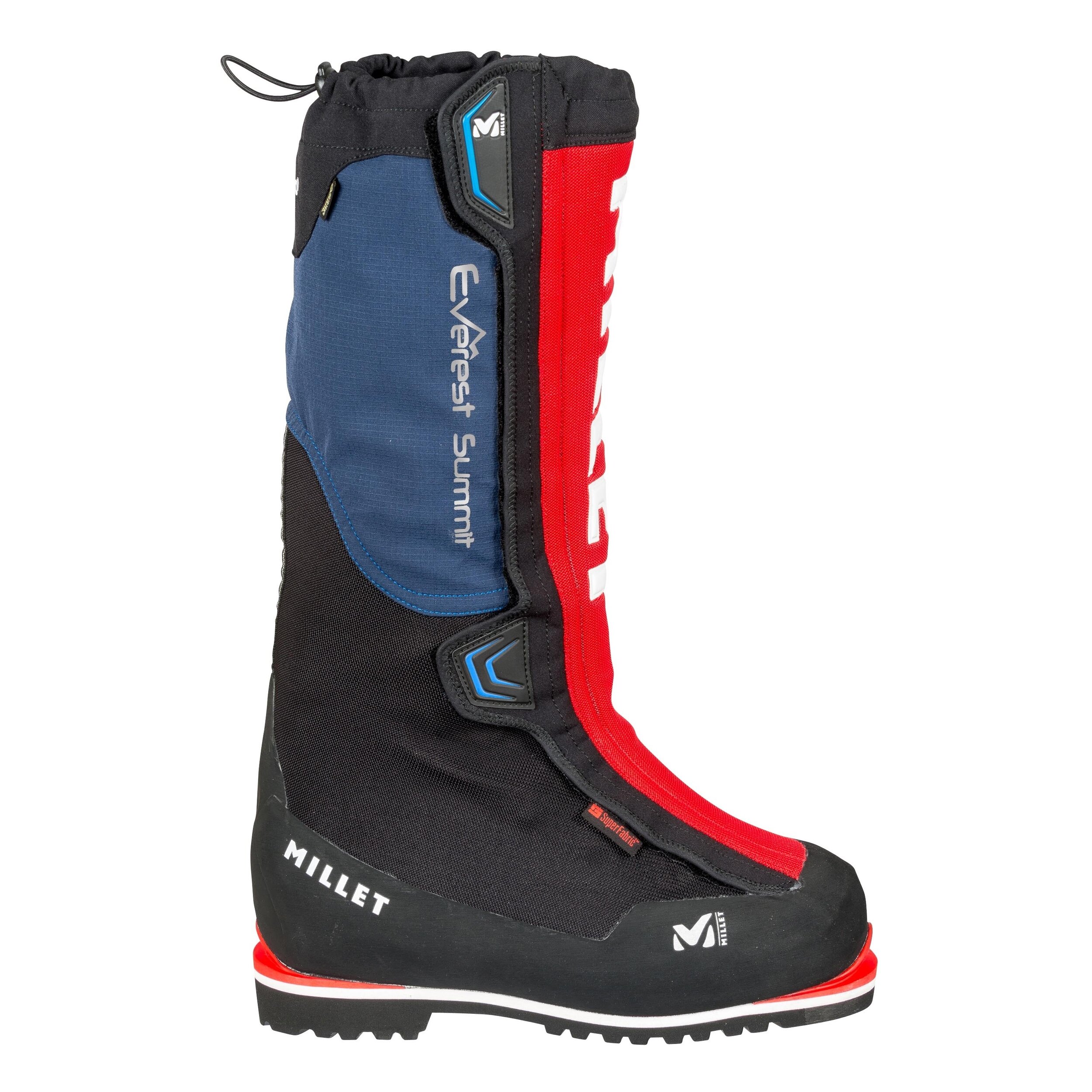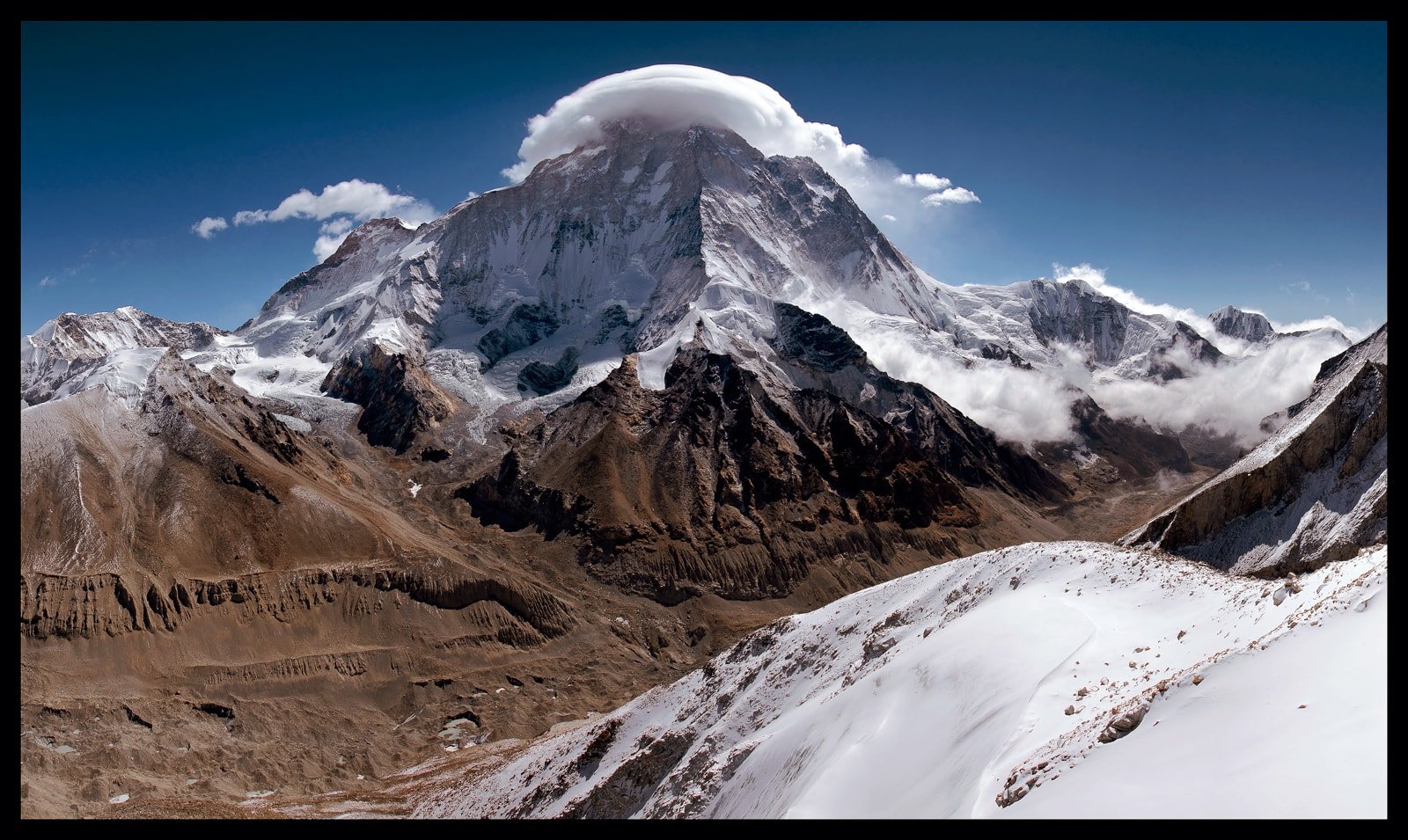11 other essentials items for Mountaineering expedition: Easy to forget but super useful in the mountains - Namas Adventure
Mountaineering expeditions are tricky and when it comes to packing our gears it never ends. Pack, unpack, repack, re-check tour list and repack again. Wait for a few days and you feel you have missed something or you are wondering how can I make my pack lighter & smaller. So begins the process of organizing it and repacking it again. Our guess is you will never be satisfied with the process.
In this post, we have listed 11 essential items that may not look handy but are super useful during your mountaineering expedition. These items are not super-must and are easy to miss but having them in your pack can make your life a little bit easier during your expedition. Consider it mountain luxury at your disposal, adding a bit of comfort to your expedition.
Lip guards (Yes, more than one) & Sunscreen cream SPF 50, 70, or 100 (Also more than one)
SPF 50 blocks 98% of UVB rays
SPF 100 blocks 99% of UVB ray
Extra socks and gloves
We highly suggest you pack at least 1-2 pairs of expedition socks and gloves. There are days when you don’t feel like doing your laundry and having that extra socks is comfort on its own. Gloves are tricky, great if you don’t loose one, but if you do having that backup pair is key as you won’t be able to climb without your gloves. That we can guarantee and frostbite is not the ideal situation you want to experience.
Cold/warm air Mask regulator
This is one of the tools that we would consider essential for every climber. I It is amazing that many climbers are now attempting higher expeditions above 8000M+ like Everest, Makalu, Manaslu etc without supplement O2. (Kudos to the human potential and one’s motivation of pushing themselves) Or even climbing at 6000ers to 70000ers like Baruntse, Himlung, etc peaks. The air is so thin, dry, and crip cold that it takes a toll on our nose. Gross, it may sound but climbers know the issue of the clogged up nose and trying to get rid of this booger and breathing in cold air which is a struggle on its own. These air mark regulators are a godsend. It helps retain the moisture and regulate the cold air you breathe in to somewhat tolerable and a little warm. These are slowly becoming a must-have choice for many professional climbers. We can recommend two products which are listed below.
Thermos flask with a cup
Super handy when things are flexible and accessible especially when camping in high camps. That sip of warm water or tea is a god send and a booster. Imagine just having a cup when you want to drink water in your camps, the value of it is immense.
Nose/cheek Shielder
Nothing fancy here the UV rays from the sun and the cold air might be harsh on your cheeks and nose especially. So taping up can protect it from burning up.
Satellite communicator
Want to give peace of mind to your friends and families during your expeditions? Then satellite communicators are your answer. Garmin and other providers allow you to send messages to your loved ones or audience to keep track of your expeditions. (Works in most of the Himalayas Expeditions) You will have to use their subscription plans to be able to connect to the internet and use the features. The great news is you can use their FREEDOM plan when you are in the mountains and cancel it once you are back home.
Extra batteries, power banks and portable solar panels:
Solar technology keeps advancing and that’s great news for everyone. Highly recommend getting portable solar panels that you can just hang on your bag when juicing up your batteries and devices. Especially when you are in the remote corners of the Himalayas or other mountains, the sun is the only source of energy on clear days so you will want to make the best out of it and recharge all those batteries. Goal Zero makes some amazing portable solar panels and other devices that we can highly recommend for expeditions.
Extra Sunglasses
Nothing is more frustrating than losing or breaking your glasses when climbing in the mountains. Reflections from the sun are harsh and strong or even during gloomy days you must have a pair or even impossible to climb without a good visual. So always have an extra glass as a backup option. Plenty of brands out there but we are in love with JULBO pairs 😍.
Pee bottles
One can only understand the comfort of having a pee bottle when you are inside your tent and the temperature outside is freezing below -10C. Having a pee bottle at your reach is always handy when you do not have to keep getting out into the cold and dark to just your little business. That’s why we consider this, one of the musts.
Pro tip: Comes super handy when you are driving and you don’t have a place to make you wee stop 😅.
Nuts, Bars and Energy gels
You will always need that constant supply of nutrients in any form. Be it in solid-food form or liquid through the water. So having nuts, bars, or energy gels is always handy which are pocketable and easier to carry and just reach out when climbing or just resting. There’s plenty of amazing brands out there in the market. Cliff bars, High5 nutrition, SIS, etc
Wet wipes
Showers are a luxury during expeditions and it’s hard to maintain a constant flow of water at some locations or even non-existent. Wet wipes are your answers then. For the most part during the long mountain expedition, climbers understand that they may not be able to take shower for an extended period of time but we can adapt. Take a wet wipe shower (at least that’s what we call it) is a perfect alternative.
Do you have an item that you think is a must, on long expeditions that makes your life a little bit comfortable in the mountains? Please comment below.
And if you are planning mountain adventure in the Himalayas then our team is here at your service. We have yearly 6000M peak expeditions like Mera peak or Chulu West peak for beginners and experienced level climbers. 7000ers such as Baruntse 7129M Peak or Himlung Himal 7134M peak for the explorers or challenge seekers who want to climb higher peaks. 8000ers such as Manaslu 8163M or Makalu 8485M for the ones that want to get into the death zone and summit the Big E, Mt. Everest.
Explore More. Go.
Live Your Story
Namas Adventure team
Manaslu expedition (Experiences, fitness and skills) - Namas Adventure
What experiences do I need to have to climb Manaslu?
Climbing any 8000M peak is no joke and climbing at those heights should definitely give you chills and excitement. At this level, there is no such thing as an easy climb. Manaslu is no different. Although this is considered one of the most accessible 8000M+ peaks, climbing via a standard route does not come easy and previous high-altitude climbing experiences are a must. This peak does come with a substantial set of challenges and objective dangers such as bergschrund, steep vertical climb, avalanche-prone, etc. Like any other big mountaineering project you must be very-very comfortable scrambling, traversing, and climbing on steep rocky (or icy, during spring) sections, jumaring on fixed-line ropes, climbing with gears, descending on fixed-line, and bearing crisp cold climbing conditions.
Preferred Previous mountaineering experiences
At least 1 X 7000M+ peak expedition and several 4000M - 6000M+ expeditions with semi-technical to technical climbs around the world. Consider yourself ready and prepared to step into 8000M peaks with Manaslu as your starting 8000M+ peak. Manaslu Expedition is considered an essential experience before embarking higher on to Everest or K2 expeditions. Manaslu expedition attracts a lot of high-altitude climbing lovers. The general term is any semi-technical to technical peaks that are higher and have longer ascending, scrambling, traversing, and descending sections. These experiences do qualify you to take on Manaslu.
Fitness Level - 5
We have graded fitness level 5 for the Mt. Manalsu expedition. Exceptional level of all-round fitness coupled with the ability to cope and resist at the highest altitude. An exceptional level of endurance and strength fitness level is required with a high degree of mental toughness. A resistance to extreme weather conditions over extended periods of time. Heavy loads over multiple days may need to be carried. Previous experience is highly crucial in order to prepare your body to endure a high level of mental and physical toughness from both altitude and terrain.
The difficult issue is how you train for such exceptional conditions. Hard work will be required to get to that fitness level. For a General fitness indication, climbers should be able to run half marathon to marathon or be able to cycle for 4 -5 hours. If you prefer hiking, you should be able to carry a load of 25 - 30 kilograms and hike for 3 to 4 hours. Being able to complete a triathlon is a great indication that you are physically at your optimum best.
Good strength and muscle endurance training routine can be implemented with a variety of approaches such as taking part in cross-fit sessions and kettlebell training.
Skills to be learned
Guides in Nepal will advise you to keep it real simple. So there are four basic things you must - must know. These fundamental skills listed below should be of second nature to you when climbing.
Figure 8 knot and how to tie a stopper knot at the end of the rope.
Ascending/jumaring on fixed-line and abseiling with super 8 belay device or ATC descender in multi-pitch sections. You will have to be very very careful and well-rehearsed on abseiling since there is no room for errors when descending. You only get that one chance when coming down so you will have to be super careful. And for safety backup have ‘prusik knot’ tied on the main rope.
Climbing, scrambling, and traversing with crampons on for long-duration on ice, rock, and snow surface.
Performing snow arrest and safely getting back up if by any chance climbers slip and slide.
Ice climbing WI-3 to WI-4. (See our - Alpine grading for reference)
Thrill of climbing Manaslu
Climbers joining Manaslu 8163M expedition must have previous high altitude experiences and solid knowledge of various climbing skills. We recommend climbers have extra essential skills in their climbing arsenal. If you cant find mountains to climb near your place, rock climbing indoors and outdoors is one of the best ways to keep refreshing your rope skills and staying in climbing shape.
With all commercial expeditions, the majority of your expedition is handled and taken care of by your expedition company. Manaslu now more than ever is now an achievable objective with a higher success rate for climbers who don’t consider themselves pros. Thanks to the effective guidance of Sherpa leaders of Nepal. Some of our IFMGA Nepalese guides consider this peak one of their favorite climb. Having competent members from operational management to guiding leaders on the field is key for any successful expedition. Once you are signed up and you’ve got the necessary skills and experience, you will also need to commit to your physical training like any other expeditions.
Challenge yourself.
Go. Live Your Story
Are you planning to climb 🏔Manaslu 8163M in Nepal? If your dream is to climb this extremely beautiful and challenging peak in Nepal and progress to higher 7000M to 8000M+ mountains then our team at Namas Adventure/Expedition is set for your next adventure expeditions. Email - bookings@namasadventure.com or Call/Whatsapp us at +447446976060 and our team will be there to answer your inquiry and instruct you with any questions regarding the expedition.
Manaslu 8163M Expedition strategy. Base Camp to Summit - Namas Adventure
Manaslu 8163M expedition is one of the most thrilling and accessible mountain to climb at 8000M+ level. Manaslu and Cho Oyu are the two most climbed 8000M mountains. A perfect mountain to climb before embarking on the ultimate dream of summiting Everest.
Base Camp 4800M to Camp 1 (5600M - 5700M)
Our expedition begins with 🚁 helicopter flight from Kathmandu to Sama Gaun 3690M on the third day of the expedition. After acclimatising for a day in the village we begin our hike to Manaslu base camp 4800M where our camps will already have been set up by our expedition management, Sherpa & porter teams. Preparations will have already be done months before and base camp teams will be ready to welcome clients where they will enjoy, eat, rest, relax have fun. This will be the home for next 25-28 days. We will ascend by the North-East Face, utilizing 4 camps along the way. Next, after few days of acclimatisation, puja ceremony and training day our group will head to camp 1. Climbers will hike through rugged uphill path, that takes them through moraine and crevassed glacier and finally to camp 1. The views from base camp is breathtaking with Himalayas dominating the views all around.
Camp 1 (5600M - 5700M) - Camp 2 (6300M - 6400M)
The climbing route from Camp 1 to Camp 2 is a strenuous and hard climb where the team ascends moderate-angled snow slopes on the lower reaches, with a short steep slope above Camp 1. Climbing through steep slopes requires your full focus and it is expected to take anywhere from 5 - 7 hours or more until you arrive at camp 2 at 6300M -6400M. Camp 2 treats with you with another breathtaking surrounding Himalayan peaks. From here you could feel the surrounding mountains are really close to you.
Camp 2 (6300M - 6400M) - Camp 3 (6900M)
The route from camp 2 to camp 3 is mountain straight forward, requiring steady progress on a vast some snowy slopes, and one short but steep section just before arriving at camp 3. This day, we will be climbing for 4 - 5 hours.
Camp 3 (6900M) - Camp 4 (7300M)
Camp 3 to camp 4 is another steep vertical slope climbing day. Relying on the fixed ropes and your crampons to get you up to 7300M. Expect to climb for around 6 - 7 hours on this part of the climb. We will be doing a frequent rotation of higher camps to lower camps to get well acclimatized before making the final push to the summit.
Camp 4 (7300M) - Summit 8163M to Camp 2 (6300M - 6400M)
The move from camp 4 to the summit is not as technical between the camps, but longer and requires more steady progress over the flowing snowy/icy slope. The views all around on this section are as incredible as climbers will be heading towards the 8000M altitude. After around 6 - 8 hours of climb, climbers will arrive at the ‘false summit’ where a lot of the operators end their summit bid but Namas Expedition Sherpa team will always aim to fix the rope to the “true summit” which is the highest point for Manaslu 8163M. This requires meticulous planning and decision making due to the unstable nature of the ice/snow surface at the summit.
Descending the mountain is quick and straight forward but equal care is required as clients will be super tired after the summit. Making it to the summit is halfway, so our objective will be to reach camp 2 safely by afternoon or early evening hours. The very next day, we then descend from camp 2 to basecamp, which should take 3 - 4 hours. Our base camp team will be ready to welcome us there with summit achievement cheers and joy. After resting for a bit we can enjoy our much deserved warm meal prepared by our chef. The way back home involves the same trek back down into Sama Gaun, followed by a night at the village before catching the helicopter back to Kathmandu. After arriving in Kathmandu climbers will have another two nights for well-deserved celebrations, showers and rest before departing back to their home.
As climbers joining Manaslu expedition will already (must) have previous experiences, we recommend climbers to have extra essential skills in their climbing arsenal. If you cant find mountains to climb near your place, rock climbing indoors and outdoors is one of the best ways to keep refreshing your rope skills and staying in climbing shape.
With all commercial expeditions, the majority of your expedition is handled and taken care of by your expedition company. Having competent members from operational management to guiding leaders on the field is key for any successful expedition. Once you are signed up, you’ve got the necessary skills and experience all you need to be is physically and mentally prepared that is your commitment to fitness training.
Challenge yourself.
Go. Live Your Story
Are you planning to climb a remote, rugged, and challenging 8000M+ peak with substantially less objective danger? Whether your goal is simply to climb an extremely high altitude peak, explore and climb remote peaks in Nepal, or progress to higher 8000M+ peaks then our team at Namas Adventure/Expedition is set for your next adventure. Email - bookings@namasadventure.com or Call/Whatsapp us at +447446976060 and our team will be there to answer your inquiry and instruct you with any questions regarding the expedition.
Everything you need to know about Manaslu 8163M Expedition - Namas Adventure
Everything you need to know about Manaslu 8163M Expedition
Manaslu Expedition is considered a must climb for anyone seeking to climb Everest or other challenging 8000M+ peaks in the world. Crowning itself the eighth highest peak in the world, this mountaineering expedition is suitable for anyone with 6000M - 7000M+ climbing experience. This is a perfect expedition to experience not only the challenges of climbing an extreme altitude peak but also experience the death zone altitude climb. The climbing route is technical and strenuous with fixed rope line support available to reach the summit. We expect all climbers to be extremely fit for any 7000M - 8000M+ expedition.
During climbing days, Sherpa guides leaders from several groups work together to set up the ropes. The climbing route is mostly on ice and snowy surfaces with an exposed section past 6600M+ all the way to the summit. Be ready for long duration of climbing on steep vertical section, crossing through crevasse and jumar/climbing/walking on steep sections for long hours. This is definitely a must climb for any climbers seeking high altitude climbing adventure if you particularly dream to climb Mt.Everest.
*History: Manaslu was first climbed on May 9, 1956 by Toshio Imanishi and Gyalzen Norbu, members of a Japanese expedition.
We have listed 10 useful pieces of information that will help you prepare for your Manaslu 8163M climbing expedition.
1. When is the best time to climb Manaslu?
Manaslu is best suited to climb at the end of Monsoon season in Nepal. (3rd week of August to October)
Note - Manaslu is one of the most popular climbs at 8000M+ level in Nepal after Everest. You can expect several teams to attempt the climb in any given year.
2. How much does the Manaslu expedition cost? What does it include?
With Namas Adventure team, the Manaslu expedition costs $18250 P/P (Heli charter Ktm - Samagaon - Ktm) and $17500 P/P (trek to Samagaon and back via helicopter to Ktm from Samagoan). We provide premium high-quality all-inclusive peak climbing services. Our team’s focus is your safety, successful summit, experiencing the local culture having fun. As a company, we are focused on our core values of being a responsible, ethical, and sustainable mountain adventure brand. Climbers do not have to worry about anything with our team and totally focus on their expedition and fun times ahead.
List of what’s included in your booking.
IMFGA/NMA certified Guide leader
$1000 Individual tip pool. Tip pool will be fairly distributed among all Namas staff members. (Guides, porters, drivers, hotel security, and staff). Guest may personally hand in extra tips to our guides and porters)
Namas Branded merchandise (Down Jacket, Cap, Buff)
🚁 Helicopter charter to Nearest village (Sama Gaon) from Base camp and 🚁 helicopter charter back to Kathmandu after you summit and return to base camp. (clients who choose this option)
1:1 Sherpa/client ratio. ( Additional Sherpa can be arranged, extra charges apply)
Head chef and kitchen helpers ( Helpers increase with the number of climbing team members )
2 X Oxygen cylinder (Additional Cylinder $500 per O2 cylinder)
2 nights before the expedition and 1 day after the expedition. Hotel in Kathmandu. (Should clients return early from their expedition, clients will be responsible for their extra Kathmandu hotel bookings)
All trekking and climbing permits (Khumbu Region Permit and TIMS)
All internal-local transportation to and from the trekking trailhead
Expedition tents (2 or 1-person tents ) Brands Salewa, Mountain Hardwear, Samaya equipment, Kailas
60 kgs personal weight
Meals at higher camps
Chocolate, energy bars, hydration pills, biscuits, canned foods, nuts
Burners and expedition equipment
Walkie-talkie/ Satellite phone/GPS tracking system
Breakfast, Lunch, and Dinner on trek and expedition days.
Lodge accommodation during the trek
Porters per guest
Arrival pick-up and departure
Internal flights
Basic First aid kit
Welcome/Farewell leave Dinner
3. What experience do climbers need to climb Manaslu? Are guides necessary to climb Manaslu?
Experiences - Previous high altitude (6000M - 7000M+) alpine/mountaineering climbing experiences are absolutely necessary in order to climb Manaslu. If you have climbed peaks above 6000M+ such as Chulu West 6419M, Lobuche East & Island Peak and 7000er peaks such as Baruntse Peak 7129M, Himlung Himal 7126M,and Mt. Nun 7135M sets you up perfectly for the Manaslu expedition. It necessarily doesn’t have to be in Nepal and can be anywhere else in the world. Climbers need to have good knowledge and experience in hiking/climbing/traversing using crampons on snow, ice, and steep surfaces. Must be comfortable and proficient in using a fixed rope to climb on steep and exposed sections. You should be familiar with the use of climbing gears, and basic rope techniques like tying safety knots, and abseiling when coming down from the mountains and have the mental toughness to climb in cold and windy conditions.
On most major expeditions in Nepal for the majority of the time, climbers will have to rely on their jumaring skill and strength (ascending) and rappeling/abseiling skills to safely descend down the mountains. Your strength and endurance to continue for a long duration are very key for any climbers to complete this expedition.
Local Guides - By Nepalese law, when issuing permits for high altitude peaks above 6000M+ guides are a must. To issue a permit for Manaslu Expedition, you will have to go through a registered local company. For intermediate-level or even professional experience-level climbers, we highly suggest climbing the peak with guides. The standard climbing route does have several objective dangers/challenges and there are chances of avalanche, there for local knowledge and guidance is super key on any major expeditions.
If you are one of the experienced climbers with tons of climbing routes under your belt then there can be several routes that even local guides may not be able to climb. So even if you want to explore new routes then taking a guide as a backup option would be a wise choice.
4. What is the best-acclimated itinerary for the climbing Manaslu expedition?
On high-altitude climbing trips it’s imperative that climbers acclimatize properly so that the body is well-rested, adapted, and stronger to climb even higher. When we want to commit to climbing adventure at high altitude, slow and steady is the right way. Our itineraries have been refined and designed by our guides with years of climbing and guiding experiences.
On the Manaslu expedition, we have strategized our itinerary with 4 high camps and several rotations between camps 1, 2, and 3 so that climbers are well acclimatized, recovered, and stronger to complete the expedition successfully.
More details are on our Manaslu climbing strategy.
5. What training is required/experience for Manaslu climb? Can you suggest to me a training plan?
Manaslu climbing is by no means an easy climb and we require interested climbers to have a previous high altitude of at least 6000M - 7000M+ climbing anywhere in the world. Mountains are graded based on their technical and physical difficulties. For your training, it is very hard to mimic walking on ladders like the ones you will come across when crossing the crevasse in the mountains. We highly recommend focusing on endurance, core, and strength training. Any type of aerobic exercise, like long-distance running (10-20km) 3 to 4 times a week, cycling (1 hour - 2 hours), hiking gaining elevation with 15-20kgs weights on are some of the suggested training. Kettle bell strength + endurance training twice or three times a week are also recommended to build muscular endurance. We advise you to schedule your training at least 5-6 months before your climbing departure. More on our training mountain expedition blog.
6. How hard is Manaslu climbing expedition?
Manaslu expedition is graded at 4E in difficulty. (Alpine grading link).
We cannot stress enough but it’s very important climbers are mountain fit and strong before starting the expedition. In total, we will have 35 days of alpine climbing days with contingency days in case of bad weather. The climb will demand every ounce of your fitness and awareness. Breathing will be challenging but with proper acclimatization done ahead of time and by staying well hydrated and consuming enough nutrition, you should be able to cope with the altitude.
When we depart from the base camp the real alpine challenge begins, mostly climbing on steep ice and snow surfaces. Once staged up and set up at base camp the climbers prepare here for the next 35 days of climbing and summiting Manaslu. Once setting off from camps to camps Manaslu has some of the longest and uphill steep climbs. Climbing route is in a very exposed area and there are significant dangers of crevasses opening and avalanches. Ladders are set up by guide members from several expedition team and it is best to always follow the instructions of your guide when climbing.
All your previous training of endurance and strength training should have prepared your body to face those challenges.
7. What are the clothing and gears - boots required for Manaslu climb (trekking and mountaineering)? Can I rent gears for Manaslu expedition climb?
Choosing the right gear is very important. We advise climbers not to make compromises on the quality of gears and clothing, and to pay attention to layer up comfortably as well. You will depend highly on your clothes to keep you warm enough for the dropping temperatures at nighttime which can go down to -20c /-30c. Please check our equipment blog for recommended clothing and gear.
Renting your gears in Nepal? The simple answer is NO. This is one of the most frequently asked questions mainly by beginner climbers. We have tested and tried several gears in Nepal and frankly, we do not recommend hiring here. We know it might seem like a huge amount of expenses to buy all the gears, but they are well worth it. You can even hire from the city you live in. Make sure they are the original products from well-known adventure gear companies. (North face, Mountain hardware, Kailas, etc.)
Mountaineering Boots for Manaslu Expedition
With better technologies, climbing shoes have improved every year. We highly recommend double-layered boots like Kailas Everest 8000M, La Sportiva Olympus Mons Cube, Scarpa 8000 phantom, Millet Everest summit GTX. It is wise to spend on good mountaineering boots, as so with all the gears that we have mentioned in this post above.
More 8000M boots link here (other media article)
8. What types of foods are available during Manaslu Expedition? Is clean water available and how much water intake is recommended? Hydration and nutrition
We suggest all our clients drink 4-6 l of water every day. Staying hydrated will also help you with acclimatizing properly. It’s best to take hydration tablets or filtration bottles with you.
Most of the foods are prepared in the Base camp and during your climbing days foods are carried up by our Sherpa teams. You do not need to worry about food as our chef will prepare energy-dense delicacies in our base camp kitchen and all you have to do is enjoy your meal, recover and get stronger. In the high altitudes, although the weather is extremely cold, your body will naturally want to reject food or avoid using energy on anything, which includes eating too. You might have to force yourself with the first few couple of bites and then eventually your body will start accepting the food. We also provide packed dried meals, so that clients have other options should they not want to eat what’s being cooked in the tents.
Remember to avoid smoking and any alcohol intake. You might see our guiding leaders smoking or drinking but remember they are professionals and they have adapted very well to these environments compared to the climbers who go there just for adventure holidays.
9. What trip insurance will I need for Manaslu Expedition? Do I need helicopter evacuation to be included in my insurance cover?
No matter how prepared you are, you never know when or how things might go wrong. You might be sick suddenly or not that we wish but there might be some incident, you might suffer from altitude sickness or anything we can’t imagine yet. So, for these reasons, it is always good to have insurance cover. Our recommended Insurance companies (link)
Helicopter evacuation is our final emergency option and we do recommend you have one in your insurance, as it is the only means of transport in the Manaslu region. Our guides will assess your condition and examine if it is a major issue. If not, they will use their experience to motivate and push you through your trip. However, in case of emergency, helicopter evacuation will be called upon.
There is a procedure to follow when calling for emergency evacuation. We will call the insurance company hotline, get approval with your insurance, and only then helicopters are sent to the distress call location. You will have to pay for the evacuation in Nepal from your own pocket but once you are back home you can claim your money back. Make sure you collect helicopter evacuation receipts and a certified doctor’s approval letter. The insurance company will ask for this evidence to back up your claim.
There was a huge helicopter scam in Nepal in 2018, so insurance companies are taking extra measures to stop this from happening. Our guides and staff members in Kathmandu will also remind you of this process during briefings.
10. Next climbing goals after Manaslu Expedition climbing
If you want to extend your trip and combine other 6000 M peaks along with Mera peak, then we would like to recommend the following two other itineraries.
1. Ama Dablam 6819M and Island Peak 6189M climbing expedition - Click here
Technically difficult and climbing goal for many mountaineers. Ama Dablam is well renowned as one of the most beautiful and exposed Himalayan mountain in the Everest region. It is one of the most sought mountains to climb by mountaineering enthusiasts. Whether you plan to do it before or after your bigger expedition like Everest, Ama Dablam climb in itself is a mountaineering challenge on its own. Ama Dablam is considered "a must-do" for alpinist and mountaineers.
2. Mt. Everest 8848M Expedition, Nepal
3. Makalu 8463M, Nepal
Manaslu Expedition is one of the exciting 8000M mountain climbing expedition in Nepal. We hope the information we have provided above will help you decide/prepare in the best way before you embark on your Manaslu climbing journey. If you are looking for a great climbing trip and have an amazing time in Nepal then we would love to have you onboard for our Manaslu Expedition. You can be assured that you are provided quality services with our fun-loving yet professional guides who have 5 - 10+ years of taking clients on such peak climbing trips. After all we do aim to be the best adventure specialist in the world and you having a great time, being safe and summiting will always be our priority.
If you do have any more questions, please ask us below in the comment section or you can email us at bookings@namasadventure.com and our team will get back to you as soon as they can. Stay well.
Challenge yourself. Dare great things and live your story.
Experiences, fitness level and skills required to climb Ama Dablam expedition - Namas Adventure
Ama Dablam Summit push
What type of background and experience should one have before attempting Ama Dablam? What kind of climbing experience is considered sufficient for climbing Ama Dablam?
In order to successfully ascend Ama Dablam, it is essential for individuals to possess a strong foundation in high-altitude mountaineering and alpine-style climbing techniques. This includes proficiency in scrambling, traversing, and navigating steep rocky or icy terrain, as well as the ability to safely utilize fixed-line ropes and climbing gear. Additionally, it is important to be acclimatized to and comfortable with cold conditions. It is strongly recommended that individuals have prior experience climbing peaks of 6000 meters or higher in order to adequately prepare for this expedition. It should also be noted that Ama Dablam presents its own unique set of challenges and potential hazards, thus, it is imperative that individuals are thoroughly prepared and confident in their abilities to handle the aforementioned skills and conditions.
What are the prerequisites for climbing Ama Dablam?
Lobuche East & Island Peak, Chulu West, Khumbu 3 Peak expeditions, Aconcagua, Mt, Blanc (Similar 4000M - 6000M peaks or higher), and multi-pitch climb (rock or ice), rock climbing grade up to 5-9+/- to 5.10 a,b,c.
Individuals contemplating an ascent of Ama Dablam should possess a strong background in high-altitude climbing, specifically by having successfully climbed several peaks ranging from 4000 to 6000 meters that require semi-technical to technical climbing techniques. For those seeking additional challenges, many climbers choose to tackle Ama Dablam following their successful expeditions on peaks such as Mount Everest or K2. Ama Dablam is a popular destination among those who thrive on the demands of alpine climbing. Some notable examples of such peaks include Alpamayo, Mount Kenya, Denali, Mount Everest, Baruntse, and Manaslu. These peaks generally require significant technical expertise, particularly in the areas of ascending, scrambling, traversing, and descending. Having experience climbing such peaks would qualify one to undertake the challenging ascent of Ama Dablam.
Fitness level - 5
For our Ama Dablam mountain expedition, we have established a fitness level of 5. This signifies an exceptional level of overall fitness, including the ability to cope with and acclimatize to high-altitude environments. It also requires a high degree of endurance, strength, and mental toughness, as well as the ability to withstand extreme weather conditions for extended periods of time. Participants should also be prepared for the physical demands of carrying 8-12kgs of loads over multiple days. Given the challenging nature of this expedition, previous experience in high-altitude climbing is highly recommended in order to prepare both mentally and physically for the demands of altitude and terrain.
Preparing for the exceptional conditions of an expedition such as Ama Dablam requires a significant level of dedication and effort. To achieve the required fitness level, individuals should strive to achieve high levels of endurance and strength.
To provide a general indication of the level of fitness required, it is recommended that individuals be able to run a half marathon to a marathon distance, or cycle for 5-6 hours. For those who prefer hiking, being able to carry a load of 25 to 30 kilograms and hike for 6 hours+ is a good benchmark. Additionally, being able to complete a triathlon is a strong indicator that an individual is at their physical peak.
Additionally, a good strength and muscle endurance training routine can be implemented through a variety of approaches, such as participating in cross-fit sessions and kettlebell training. It is important to note that this training should be done under the guidance of a professional trainer or coach to ensure that it is tailored to an individual's specific needs and goals.
Skills to be learned.
Guides in Nepal will advise you to keep it really simple. So there are four basic things you must - must know.
Figure 8 knot and how to tie a stopper knot at the end of the rope.
Ascending/jumaring on fixed-line and abseiling with super 8 belay device or ATC descender in multi-pitch sections. You will have to be very very careful and well-rehearsed on abseiling since there is no room for errors when descending. You only get that one chance when coming down so you will have to be super careful. And for safety backup have ‘prusik knot’ tied on the main rope.
Climbing, scrambling, and traversing with crampons on for long-duration on ice, rock, and snow surface.
Multi-pitch climb (rock or ice), rock climbing grade up to 5-9+/- to 5.10 a,b,c. Indoors or outdoors. (For reference check out our - Alpine grading)
Performing snow arrest and safely getting back up if by any chance climbers slip and slide.
Ice climbing WI-3 to WI-4 (required for Spring Ama Dablam expedition)
Participating in an Ama Dablam expedition requires a solid foundation of previous high-altitude climbing experience and a strong understanding of various climbing techniques. Additionally, having additional essential skills such as rope techniques, rock climbing, and ice climbing can greatly enhance your chances of success. If you are unable to find mountains to climb in your area, a deeper level of indoor and outdoor rock climbing can help you maintain your skills and fitness levels.
While most commercial expeditions take care of the logistics, it is still important to be prepared and to have a good understanding of the technical aspects of the climb. Thanks to the expertise and competence of the Sherpa guide leaders in Nepal, summit attempts on Ama Dablam are now more accessible than ever. Some of our Nepalese guides even consider this peak to be their favorite climb, and it can serve as a great training ground for higher and more challenging peaks.
It is important to note that the success of an expedition depends on the competence of all team members, from operational management to field guides. Once you have signed up and have the necessary skills and experience, it is critical to commit to a physical training regimen in order to be fully prepared for the demands of the expedition.
Challenge yourself. Go. Live Your Story
Are you considering an ascent of Ama Dablam in Nepal? If you are eager to tackle this stunning and challenging peak and progress to even higher mountains, the team at Namas Adventure/Expedition is here to help make your dream a reality. We would be happy to assist you with any questions you may have regarding the expedition. To contact us, please email us at bookings@namasadventure.com or give us a call/WhatsApp at +447446976060 and one of our team members will be happy to assist you.








